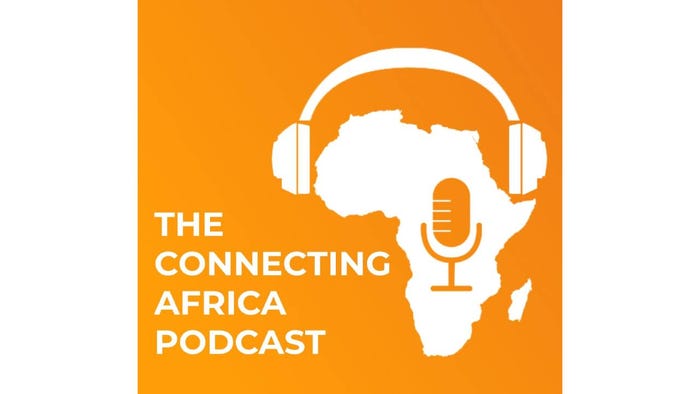Open banking's potential to foster innovation & harmonize financial servicesOpen banking's potential to foster innovation & harmonize financial services
As African banks look to digitize their services amid a growing fintech ecosystem, ICT analyst Francis Hook puts forward open banking's potential to foster service innovation and harmonize financial services in Africa.

One of main issues being addressed by technology in Africa is financial inclusion, and with this a whole range of financial technologies (fintechs) have arisen.
Each fintech is seeking to fill different consumer gaps with varying ambitions including improving economic development, narrowing gender divides, supporting small businesses or sectors (like agriculture and trade), making certain financial services (like insurance and lending) more accessible, and streamlining payment systems.
Many of these fintechs owe their success and traction to two main waves of technological advances.
Firstly, the introduction of mobile money, around 2009-2010, which initially was for person-to-person (P2P) money transfers, but later evolved to include point-of-sale (PoS) merchant payments.
Around the same time, the increased uptake of mobile, social media and cloud services helped bolster the delivery and usage of mobile money.
Aside from the mere usage, mobile money and its later iterations on smartphones helped shore up understanding of and trust in a technology that has been integral to allowing the proper appreciation of the potential of different types of fintech and making the target market more amenable to considering new financial services.
Indeed, one could rightly assert that mobile money is the single biggest catalyst that has aided the evolution of fintech as it is known today. If one examines the uptake of fintech across Africa, the maturity and levels of adoption have often come on the back of the adoption of mobile money and its regulation.
Secondly, in the last decade or so there has been greater acceptance and usage of application programing interfaces (APIs) by third parties, even outside of financial services.
This, coupled with even greater mobile adoption – especially of smartphones – and the leveraging of emerging technologies like artificial intelligence (AI), and its subset machine learning (ML), has allowed for innovation of more types of fintech that are more viable and less risky.
As fintech has evolved and enabled the provision of other services (like e-hailing, commerce etc.), it has brought with it new opportunities.
Different services have provided additional valuable touch points from which financial services providers can derive hitherto missing information on unbanked populations based on their usage (transaction values, volumes and frequencies): whether it is retail use, person-to-person transfers, micro loans (and repayment data), bank to mobile money transfers or something else.
With this wealth of information – especially in developing parts of the world where mobile money has gained the biggest traction because of huge numbers of unbanked individuals – traditional banks may now be more open to consider a new avenue of collaboration and innovation: open banking.
The rise of open banking
Open banking has its genesis in the European Union's (EU's) Second Payment Services Directive (PSD2), which was formulated to modernize and streamline payment regulation and allow both consumers and businesses to have greater control over their financial information.
The directive requires banks and other financial institutions to make financial information available to approved third-party providers.
For the EU, the premise has largely been about information sharing between traditional financial sector players and third parties with a view to allow greater service innovation and grow the space for fintech companies.
For example, when a bank shares information with a third party on money inflows and outflows, the third party – usually a fintech – can then create a new product like personal finance management, through which a consumer can – outside the banking system – attend to their monthly financial commitments, allocate amounts for savings, make investments, budget their expenses and generally have greater visibility and control of their finances.
In such an instance, the information on a customer is shared by the bank through an API, which allows the third party not just to have visibility over the customer's information, but also to analyze that information and develop a mobile application that contains certain features that are helpful to the customer.
These are features that a traditional bank does not offer owing to the rigid nature of the ICT systems it already maintains. This way, banks can collaborate with fintechs to make other services available and add value for its own customers.
In some instances, they could "white label" services from a third party and position them as their own – for example, motor vehicle or health insurance – and in the background have such services managed and delivered by the fintech.
In Africa, the premise for this and the direction that information flows may be slightly different since the focus should not only be on lifestyle products and services aimed at the affluent or well to do, based on their banking information, but also on the unbanked population, based on their activities and touch points in the mobile money space.
In essence this supplants banking information with mobile payment information to allow for the offering of services from which the unbanked are usually excluded – services like insurance, business loans, investments, etc.

Open banking can help banks to collaborate with third-party fintechs to avail new services and value addition to banking customers. (Source: Image by freepik)
There are numerous touch points where consumers leave a digital financial footprint that help inform their financial status and suitability for various fintech services – cab hailing, micro loans, mobile payments, retail purchases (both online and offline) among others.
In all these instances there are certain givens: that a consumer has a suitable device and requisite knowledge to use it, they have a certain income, they have a certain lifestyle, and finally they have a certain financial profile.
Hence, a user's information can be shared with a third party (insurer, mortgage company, lender) and such providers can be in a better position to render an analysis (even of anonymized data) and assess whether certain market segments may be eligible for a personal or business loan, insurance or asset finance.
Once onboarded into these micro financial services, such market segments can then be gradually weaned into the traditional banking system – to deposit their earnings from businesses, dividends from stocks, loans etc.
Open banking also allows fintechs and traditional banks to have a go at occupying another space that emerged briefly but soon died out.
On the back of fintech's evolution and success, there emerged entities called neo banks that were a short-lived species in the fintech evolutionary cycle and emerged to challenge traditional banks that seemed to be encumbered by old ways and legacy ICT systems.
However, most neo banks died out eventually after banks styled up their systems and made forays into online banking using mobile applications with great user experience (UX) and user interfaces (UI) to boot.
Open banking's benefits
Through service innovation afforded by open banking principles, individual consumers need not shop around among different financial services providers and maintain multiple accounts, but instead enjoy reduced complexity and lower costs by accessing different services at one stop.
In essence, open banking can offer a single view of an individual's financial existence – like stocks and other investments, motor vehicle registration, and health and life insurance, as well as income, payments, debts, etc.
Businesses, on the other hand, can access similar benefits and better manage their cashflows, access assets and other financing, and negotiate lower interest rates on loans.
Open banking can potentially reduce friction and create harmony between traditional banks and fintechs by allowing collaboration. Out of this collaboration, service innovation can thrive even more and allow for better segmentation and servicing of target markets.
Challenges facing open banking
While open banking is largely nascent in Africa, financial sector regulators in some countries like Ghana, Nigeria, Kenya and South Africa have taken a closer look, releasing soft regulations and guidelines or adoption frameworks to help industry players determine whether to participate.
However, while it is still emerging, existing financial sector regulation of technology and mobile money continues to evolve. This presents a challenge as no definitive end game can be envisaged since both technologies and fintech keep evolving with seemingly intractable issues like data protection, security, privacy and fraud as near constant challenges which keep changing their complexion.
Another challenge emanates from the fintech space, where some service provider lapses or dodgy practices – especially with micro lenders – and compound issues around trust (data protection and privacy), which could potentially dampen the acceptance of new mobile-based financial services availed through open banking systems.
In as much as secure APIs have evolved, among traditional banks that are required to comply with clearly laid out sector regulations, there is a certain amount of disquiet when it comes to information sharing, especially in markets that lack clear standards or interoperability frameworks.
Looking ahead, with the right policy and regulatory frameworks, open banking could potentially help create a new financial sector ecosystem, including market consolidation, and present better avenues through which financial inclusion could be deepened in Africa.
Related posts:
— Francis Hook, Africa ICT Analyst, special to Connecting Africa


.jpg?width=700&auto=webp&quality=80&disable=upscale)
_(1).jpg?width=700&auto=webp&quality=80&disable=upscale)

_(1).jpg?width=700&auto=webp&quality=80&disable=upscale)
.jpg?width=700&auto=webp&quality=80&disable=upscale)
.jpg?width=700&auto=webp&quality=80&disable=upscale)
_(1).jpg?width=700&auto=webp&quality=80&disable=upscale)
.jpg?width=700&auto=webp&quality=80&disable=upscale)

.jpg?width=700&auto=webp&quality=80&disable=upscale)